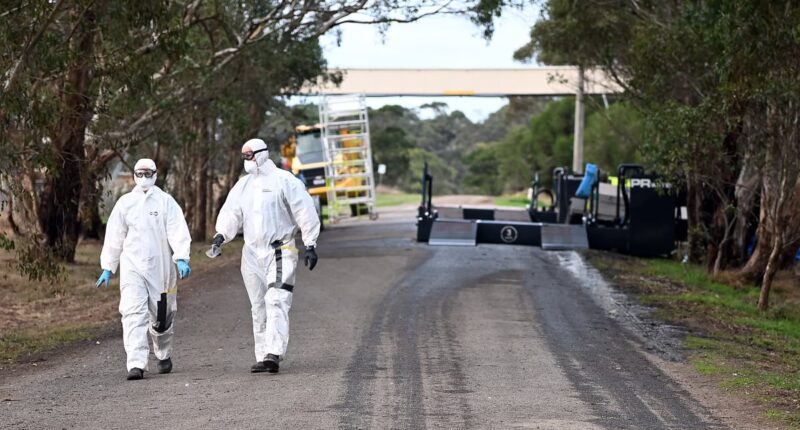The terrifying symptoms striking victims in a mystery disease outbreak in the Congo have been revealed.
The outbreak has tragically claimed the lives of over 50 individuals so far, with the majority of patients succumbing to the illness within just 48 hours of showing symptoms. Reports indicate that a total of 413 individuals have been infected.
The first instance of the illness was documented in Boloko on January 21, where three young children below the age of five fell ill after consuming a deceased bat.
Authorities in the region revealed that the affected patients exhibited symptoms resembling a hemorrhagic fever, including high fever and vomiting, followed by severe internal bleeding.
In a local health department report, officials added that the first three cases, in children under five who reportedly ate a dead bat, also suffered from diarrhea and fatigue.
Patients reported symptoms of pain in the neck and joints, sweating and shortness of breath. In those under 59 years old, intense thirst and in children, persistent crying were also reported.
Local officials have described the outbreak as ‘really worrying’, with doctors saying the outbreak was ‘really alarming’ and ‘of significance to the rest of the world’.
It is not clear what is behind the outbreak, with patients testing negative for hemorrhagic fevers like Ebola and Marburg virus.

The above shows workers in Hazmat suits in Victoria, Australia, in June last year after they were called to reports of a bird flu outbreak
About half of the patients have tested positive for malaria, similar to a separate outbreak in the country reported late last year. Many patients are also reported to be suffering from malnutrition.
Dr Zania Stamataki, an immunologist at the University of Birmingham in the UK, said: ‘The symptoms shown in these infections are different to the alarming infections caused by severe malaria in the DRC at the end of last year.
‘The time from symptom onset to death is 48 hours, which is very alarming.’
She added: ‘We know that the patients tested negative for known hemorrhagic fever viruses such as Marburg and Ebola. Other hemorrhagic fever-causing pathogens are being investigated.’
It is also not clear how the disease is spreading, although doctors say that previous cases hemorrhagic diseases have spread via contact with fluids from patients.
Neither Marburg or Ebola — other hemorrhagic viruses — are spread through the air.
The World Health Organization (WHO) says it is also looking into the possibility that the outbreak is being caused by a toxic agent, rather than a virus or bacteria.
Scientists fear that more patients will be identified in the outbreak in the coming days.

Marburg has a mortality rate of up to 88 percent. There are currently no vaccines or treatments approved to treat the virus

The World Health Organization reported 431 people had been struck down with 53 dead in two remote villages in the country’s western Équateur province
Cases were then recorded in Danda village, and then a second larger outbreak in Bomate village — which pushed the case count to 400. A local media outlet has suggested that nearly 1,000 people have been infected.
The WHO has warned: ‘Urgent action is needed to accelerate laboratory investigations, improve case management and isolation capacities, and strengthen surveillance and risk communication.
‘The remote location and weak health care infrastructure increase the risk of further spread, requiring immediate high-level intervention to contain the outbreak.’
Dr Michael Head, a senior research fellow in global health at the University of Southampton in the UK, said: ‘There is a huge amount of uncertainty about this outbreak.
‘Outbreaks like this will happen many times around the world and are typically brought under control relatively quickly.
‘However, here, it is concerning that we have hundreds of cases and over 50 deaths, with haemorrhagic-fever like symptoms widely reported among those cases.’
He added: ‘Tests are never 100 percent accurate, and it is likely that with increased testing, we will have a confirmed pathogen in some of those samples.
‘The lack of healthcare infrastructure in the DRC means the public health response is more complicated.
‘However, the country has had mpox and Ebola outbreaks in recent times, so they are experienced at addressing infectious disease epidemics.’
Experts have long warned about diseases jumping from animals to humans via locations such as wet markets, where wild animals are eaten — labelling them ideal breeding grounds for pathogens.
One infamous site in the Chinese city of Wuhan is thought to have played a role in Covid’s murky origin.

















